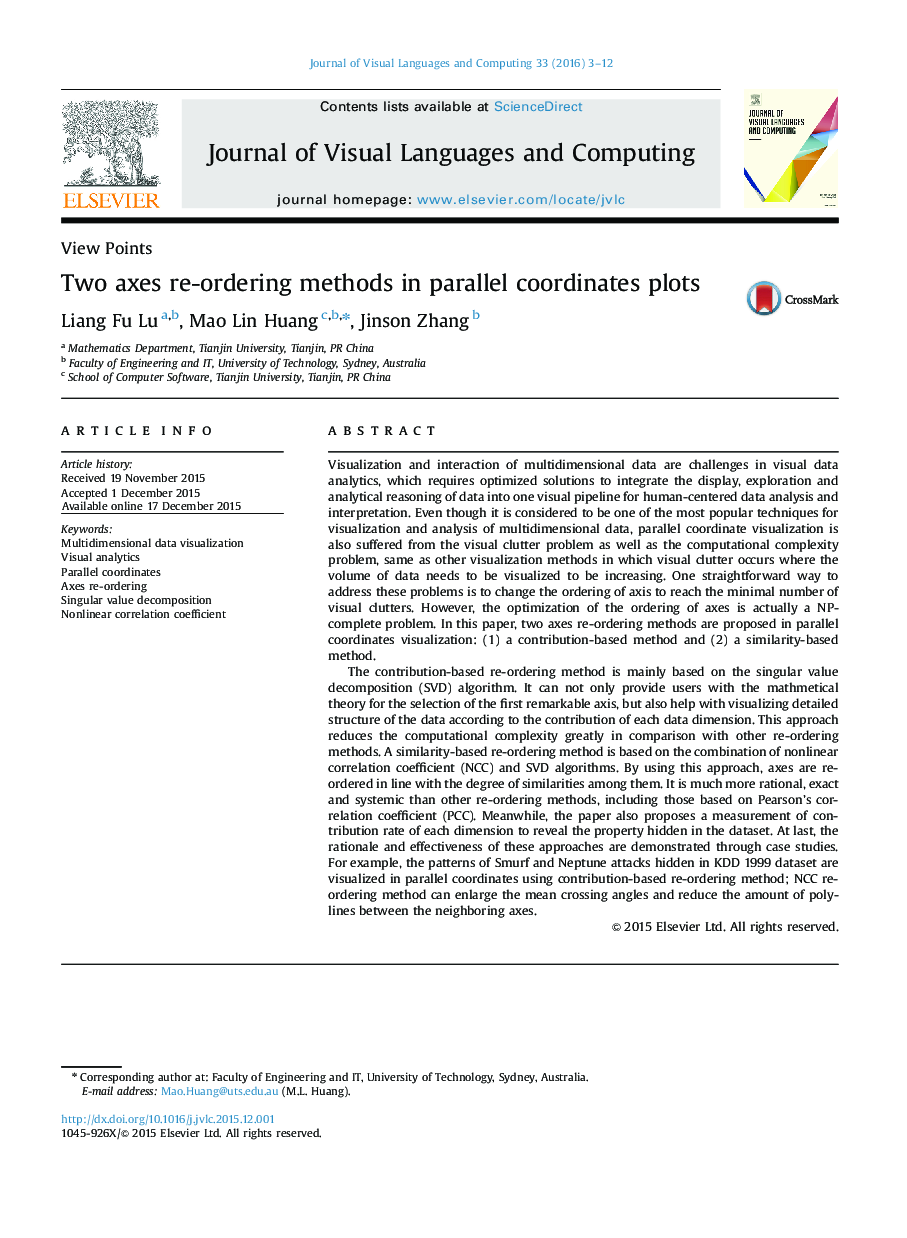| کد مقاله | کد نشریه | سال انتشار | مقاله انگلیسی | نسخه تمام متن |
|---|---|---|---|---|
| 524366 | 868630 | 2016 | 10 صفحه PDF | دانلود رایگان |
Visualization and interaction of multidimensional data are challenges in visual data analytics, which requires optimized solutions to integrate the display, exploration and analytical reasoning of data into one visual pipeline for human-centered data analysis and interpretation. Even though it is considered to be one of the most popular techniques for visualization and analysis of multidimensional data, parallel coordinate visualization is also suffered from the visual clutter problem as well as the computational complexity problem, same as other visualization methods in which visual clutter occurs where the volume of data needs to be visualized to be increasing. One straightforward way to address these problems is to change the ordering of axis to reach the minimal number of visual clutters. However, the optimization of the ordering of axes is actually a NP-complete problem. In this paper, two axes re-ordering methods are proposed in parallel coordinates visualization: (1) a contribution-based method and (2) a similarity-based method.The contribution-based re-ordering method is mainly based on the singular value decomposition (SVD) algorithm. It can not only provide users with the mathmetical theory for the selection of the first remarkable axis, but also help with visualizing detailed structure of the data according to the contribution of each data dimension. This approach reduces the computational complexity greatly in comparison with other re-ordering methods. A similarity-based re-ordering method is based on the combination of nonlinear correlation coefficient (NCC) and SVD algorithms. By using this approach, axes are re-ordered in line with the degree of similarities among them. It is much more rational, exact and systemic than other re-ordering methods, including those based on Pearson’s correlation coefficient (PCC). Meanwhile, the paper also proposes a measurement of contribution rate of each dimension to reveal the property hidden in the dataset. At last, the rationale and effectiveness of these approaches are demonstrated through case studies. For example, the patterns of Smurf and Neptune attacks hidden in KDD 1999 dataset are visualized in parallel coordinates using contribution-based re-ordering method; NCC re-ordering method can enlarge the mean crossing angles and reduce the amount of polylines between the neighboring axes.
Journal: Journal of Visual Languages & Computing - Volume 33, April 2016, Pages 3–12
